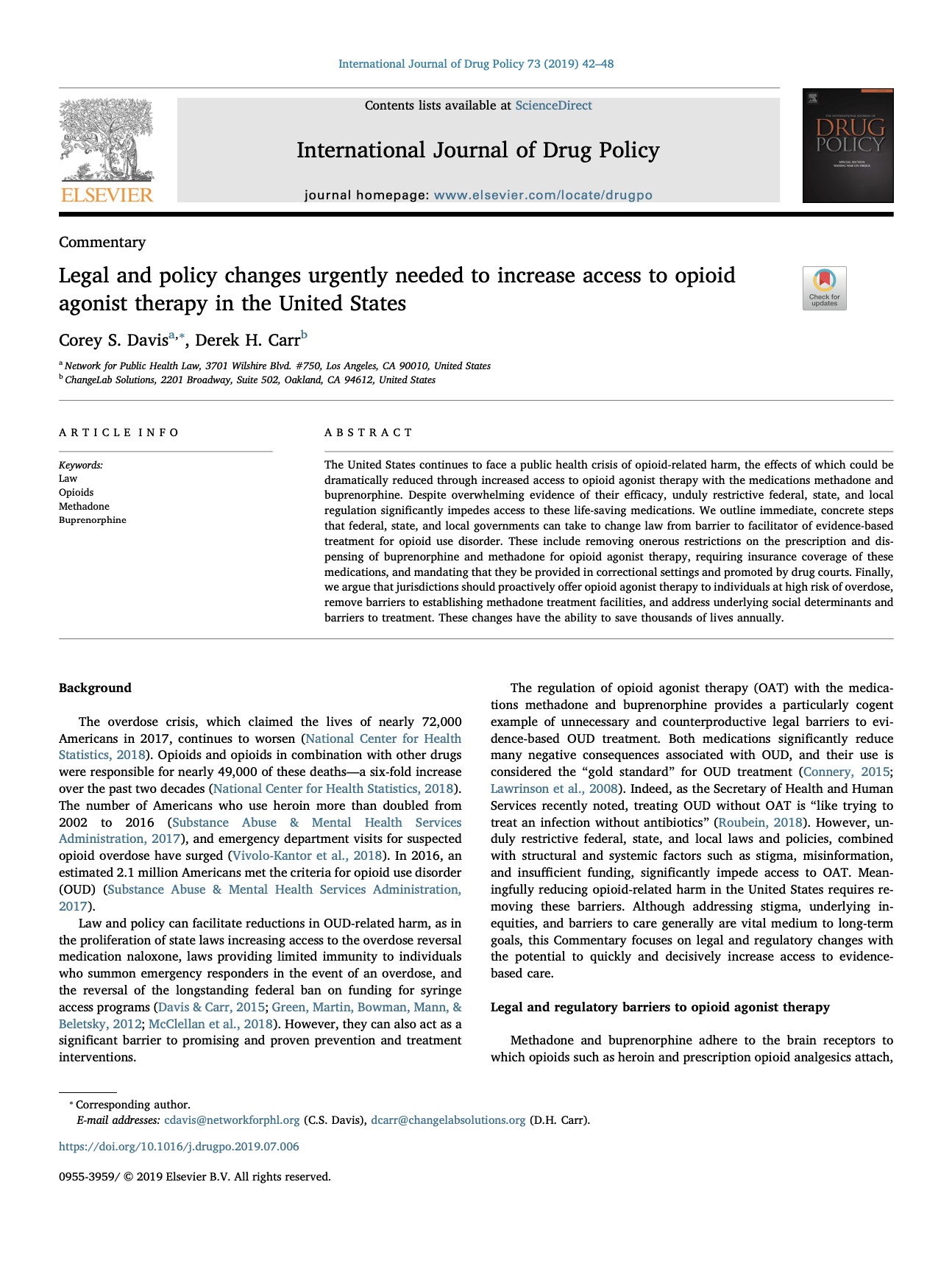The United States continues to face a public health crisis of opioid-related harm, the effects of which could be dramatically reduced through increased access to opioid agonist therapy with the medications methadone and buprenorphine. Despite overwhelming evidence of their efficacy, unduly restrictive federal, state, and local regulation significantly impedes access to these life-saving medications. This commentary outlines immediate, concrete steps that federal, state, and local governments can take to change law from barrier to facilitator of evidence-based treatment for opioid use disorder.
Recent Abstracts
How the Alcohol Industry Steers Governments Away From Effective Strategies to Curb Drink…
Analysis of the Efficacy of Alcohol Industry-Sponsored Drink-Driving Campaigns
Messaging Recommendations for Effective Road Safety Campaigns: Lessons From Formative Research for Drink…
Testimonials: Personal stories that have the power to save lives on the road
Knowledge, Attitudes, and Practice Study on Lead Poisoning and Pollution in Indonesia
Improving Civil Registration and Vital Statistics Systems in French-Speaking Countries: Opportunities and Challenges
Strengthening the Civil Registration and Vital Statistics (CRVS) System in Colombia
Estimation of the direct and indirect costs attributable to alcohol consumption in Brazil
Guidance for Collection and Processing of Cause-of-Death Data in the Civil Registration and…
Vital Strategies: Reimagine Public Health
